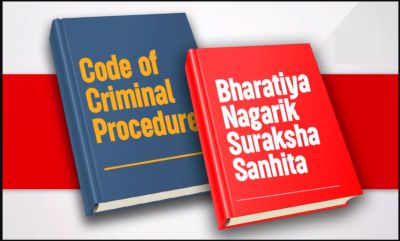Context-
The Bharatiya Nagarik Suraksha Sanhita (BNSS), 2023, introduces Section 107, which pertains to properties identified as "proceeds of crime." Previously, this term was primarily referenced within the Prevention of Money Laundering Act (PMLA), 2002, and certain provisions of the earlier Code of Criminal Procedure (CrPC). The BNSS marks a notable shift, particularly through its provisions for the attachment and forfeiture of properties linked to criminal activities.
● Unprecedented Powers Granted
Section 107 of the BNSS provides extensive powers to the court, allowing for the attachment of any property upon the request of police during an ongoing investigation. This is a departure from earlier legal frameworks, where such actions were more restricted and contingent upon specific legal standards. This section enables the court to forfeit properties deemed proceeds of crime to the government under certain conditions, which raises significant legal and practical concerns.
Under this section, a police officer, with the approval of the Superintendent of Police or the Commissioner of Police, can apply for property attachment if there is reasonable belief that the property was acquired through criminal activity. Unlike the PMLA, which requires documented reasoning for such beliefs and has specific conditions for provisional attachment, Section 107 lacks these safeguards, allowing for immediate action without comprehensive justification.
The PMLA stipulates that when an officer believes a person possesses proceeds of crime, they must document their reasoning. If there’s concern that the property might be concealed or transferred, they can provisionally attach it for a maximum of 90 days. In contrast, Section 107 permits attachment during the investigation without such preconditions, raising the potential for misuse and arbitrary action.
● Investigation and Legal Procedures
Under the PMLA, property involved in money laundering is disposed of only after a trial concludes, ensuring that legal proceedings guide the process. However, Section 107 does not clarify when or how the disposal of attached property occurs. The provision states that if the court finds the property to be proceeds of crime, it instructs the District Magistrate to distribute the property to affected parties. This could happen without concluding the investigation or trial, which raises significant concerns about due process.
Challenges in Property Disposal
● Provisions for Property Management
An entire chapter of the BNSS outlines procedures for property management, mirroring aspects of the CrPC. However, Section 497 introduces a requirement for photographic or video evidence of the property, aimed at preventing tampering. Yet, it fails to address how and when property will be disposed of, leading to ambiguity and potential injustice.
● Safeguards and Notifications
Section 107 mandates that the court issue a show-cause notice within 14 days to explain why the property should not be attached. If the concerned individual does not respond, the court may proceed with an ex parte order. Although this offers some level of notification, the rapid timeline could compromise the fairness of the process, particularly if claimants are unaware of their rights or the status of the property.
Legal and Ethical Considerations
Article 300A of the Indian Constitution enshrines the right to property, stating that no person can be deprived of property except by law. This provision emphasizes that legal frameworks must be just, fair, and reasonable. The BNSS's approach raises concerns about potential violations of this fundamental right, particularly if property can be disposed of without a thorough legal process.
● The BNSS does not adequately define "proceeds of crime," leading to uncertainty. While the act uses the term in relation to organized crime and terrorism, the lack of a clear definition creates gaps in legal clarity, which could complicate enforcement and judicial proceedings.
Legislative Intent and Implications
The introduction of Section 107 appears to empower states to expedite the disposal and distribution of proceeds of crime, contrasting with the PMLA, which is a central act. However, the practical execution of this intent presents significant legal hurdles. Identifying rightful claimants is complex, and the final disposal of property by courts without a full trial undermines principles of justice.
Granting unbridled powers to courts for property attachment based on police requests poses risks of misuse. The potential for arbitrary actions without sufficient oversight could lead to the infringement of individuals' rights and wrongful deprivation of property.
Section 107 of the BNSS raises critical legal and ethical questions regarding the attachment and forfeiture of properties linked to criminal activities. While the intention to empower local authorities and expedite legal processes is apparent, the absence of necessary safeguards and definitions may lead to unjust outcomes. The need for a balanced approach that respects individual rights while enabling effective law enforcement is paramount. Without careful amendments and clarifications, the provision may do more harm than good, compromising the principles of justice, fairness, and reasonableness that the legal system is built upon.
|
Probable Questions for UPSC Mains Exam- 1. What are the key concerns associated with the lack of preconditions and safeguards in Section 107 of the BNSS regarding the attachment and disposal of properties identified as proceeds of crime? (10 Marks, 150 Words) 2. How does Section 107 of the BNSS compare to existing frameworks like the PMLA and CrPC in terms of legal procedures for the attachment and forfeiture of property, and what implications does this have for individual rights? (15 Marks, 250 words) |
Source- The Hindu







